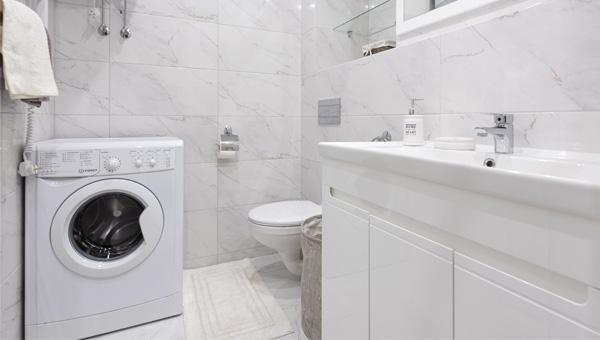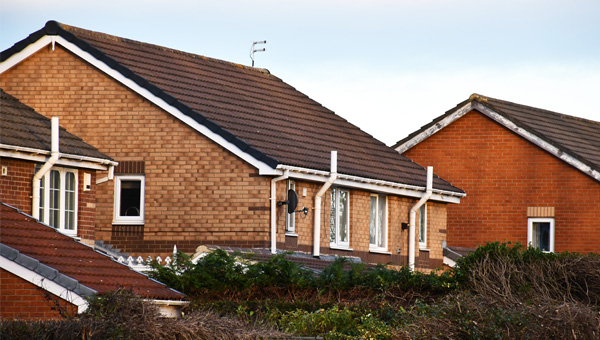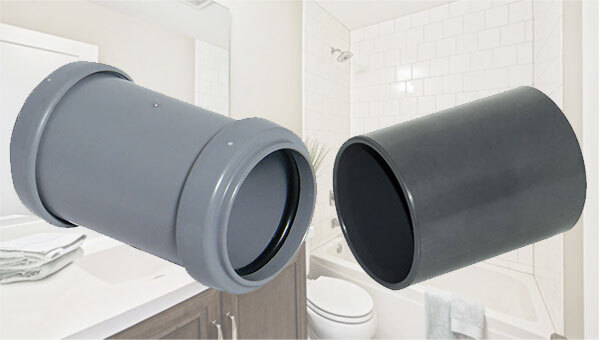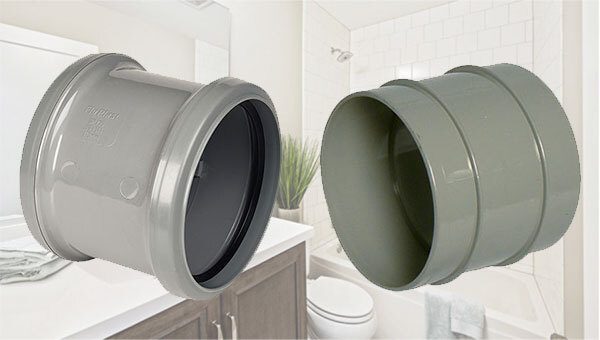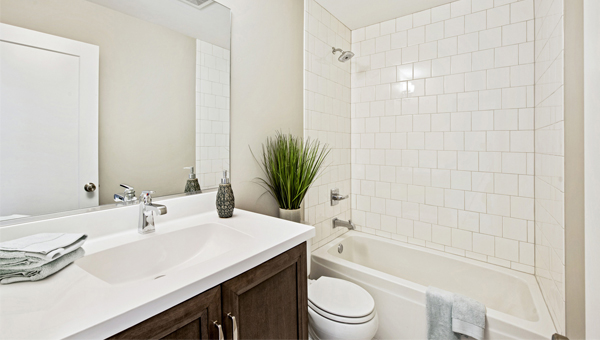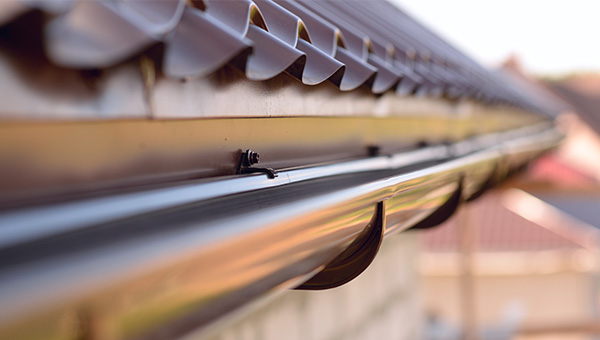
Guttering is one of those important parts of your house that you likely never give a second thought to until something goes wrong. But what happens when it does? What happens if you need to have your guttering replaced? With so many different material and profile options available out there, how do you know what to choose? To help answer this question, let us take a look at the most common options available today.
Before we get started, we should probably clarify that we will be discussing the different types of Eaves guttering systems in this article, and not Valley or Parapet gutters. Eaves gutters run along the edge of your roof and are the most common type of guttering that most of us will be familiar with.
While the general design of a guttering system will be the same for most properties, the style and type of materials vary quite widely. There’s modern guttering, traditional guttering, metal guttering, plastic guttering, and all of them have their pros and cons. In some cases, you may be restricted on your choice if, for example, your property is a listed building, or because you are wanting to match the look of your neighbours guttering, or even that of your existing system to repair a damaged section. Ultimately, however, if you are in the market for an entirely new guttering system, it’s more often than not going to simply come down to personal choice and budget range when deciding which type of guttering is right for you. To aid with that choice though, we’ve put together the following explanation of the most common options available.
Please Note: Depending on where you buy your guttering from, you may find that choosing a certain material limits the profile (shape) options available to you. We believe that selecting the right material is the most important aspect of choosing your guttering and, as such, we will first look at the material options available and then the profiles. However, it is up to you to decide which aspect is most important for your project. The information in this article should be taken only as a general guide to styles available and not as an exhaustive listing of the products you can buy.
Gutter Material Options
In essence, your biggest choice here is between metal guttering and plastic guttering, both of which have their merits. But which one is best? That really depends on what you want from your guttering. Generally speaking, PVC plastic guttering is cheaper and easier to install than a lot of the metal options, making it the ideal choice for DIYers on a budget. However, it is also less durable and more prone to damage than its metal counterparts. Metal guttering, on the other hand, tends to be stronger and more durable against the elements, but can be significantly more expensive to buy and trickier to install, meaning that you’d more than likely want to get a professional in to help.
All modern gutter systems sold in the UK (at least by reputable manufacturers and retailers anyway) must be designed to BS EN 12056-3:2000 Gravity drainage system standards. This means that any type of guttering you buy will be fit for purpose and serve you well. As long as they are properly installed and regularly maintained, there is no “bad” guttering material that should be avoided. There are, however, systems that will suit your property and your budget better than others, and here is what you need to know about each of them.
Plastic (PVC) Guttering
Despite being, generally, the cheaper and less durable material choice, PVC gutters are still reassuringly strong and more than fit for purpose. Made from moulded plastic, they are flexible, don’t easily lose their shape, and are available in a variety of colours to suit your house without the need to paint them.
One of the biggests benefits to PVC guttering is the “snap/push-fit” design of all the component parts. The ease with which an entire system can be connected together, without any specialist knowledge, makes PVC an incredibly DIY friendly material. It also makes replacing damaged sections quick and easy.
The downside to PVC is that it is more vulnerable to damage from UV rays and can become brittle over time. It is also susceptible to cracking when exposed to hard frosts. PVC gutters can also be more easily damaged by ladders being lent up against them during maintenance.
Metal Guttering
For metal guttering, there are a number of options available (we’ll discuss these further in just a moment), but in general they tend to offer a stronger and more decorative alternative to PVC plastic. They are more resistant to extreme weather conditions and UV light exposure, and robust enough to better withstand the occasional knock from wobbly ladders being bashed against them.
There are some disadvantages to metal guttering, but they are better discussed individually for each type. So let us adopt the old adage of “age before beauty” and start with the most traditional choice of metal.
Cast Iron Gutters
Cast iron is a good, strong material for guttering that can last for over a hundred years if properly installed and maintained. It is especially ideal for use on heritage projects and listed buildings (sometimes being the only material permitted to maintain the traditional look of such properties), but is adaptable enough to suit any design style and building type.
The downside to using cast iron gutters is that they are among the most expensive of choices available. When a 4m length of PVC gutter can cost you under £10 and a 2m length of cast iron can cost around £30, it becomes a significantly larger investment to install this type of guttering. This higher cost also becomes a factor when considering any potential repairs. The cost of having a tradesman come and fix a leak in your cast iron guttering can be a nasty kick in the savings.
Another issue with cast iron is its sheer weight. Compared to PVC, and even the other metal types available, it is substantially heavier which makes installation a 2 person job and proper scaffolding a necessity. Then there are the maintenance requirements. To reach that potential lifespan of 100+ years, cast iron gutters need to be covered with a bituminous paint once every five years at least. It’s not a deal breaker, as it can be done by any DIYer who’s competent with a paint brush and knows how to work safely on a ladder, but it is still a laborious job and one you will have to budget for, especially if you need to hire someone else to do it for you.
What about cast-iron effect gutters?
If you like the look of cast-iron gutters, but don’t want the added installation and maintenance hassle that comes with them, take a look at our PVC cast-iron effect guttering from Floplast. This range offers all the benefits of high quality plastic guttering with the outward appearance of more traditional cast-iron guttering. It’s a best of both worlds product that’s ideal for any DIY project.
Galvanised Steel Gutters
At the other end of the metal guttering spectrum is galvanised steel. Often the most affordable and cost effective of the metal types, it can be a middle ground between the strength of cast iron and the lighter weight of PVC. It is resistant to thermal expansion and contraction which grants greater joint integrity against the variable weather conditions in the UK.
Unpainted, it provides a nice contemporary look for modern homes, but steel gutters can also be painted to match most building styles. In coastal areas especially, a special magnesium zinc alloy coating and regular painting is highly recommended to protect the steel against corrosion.
The downside to galvanised steel is that, even with protective coatings, they are still likely to succumb to the effects of oxidation after around 10 to 15 years. Regular maintenance and clearing of any sodden mass of debris from the gutter is a must to postpone the onset of rust. If you do paint your gutters, you will require special paint to do so, as standard paint does not adhere well to galvanised metal and will eventually peel or shed.
Stainless Steel Gutters
If you like the idea of steel guttering, but really don’t want the maintenance hassle, it might be worth taking a look at stainless steel guttering instead. Though they share some similarities, stainless steel is much more resistant to rust and has a longer lifespan than galvanized steel. With minimal cleaning, stainless steel guttering will also maintain its shine for much longer too.
The downside to stainless steel guttering is that it is much heavier than galvanized steel, making it harder to work with for DIYers, and quite a bit more expensive.
Aluminium Gutters
Like galvanized steel, aluminium guttering is both strong and lightweight. Unlike galvanised steel, however, aluminum gutters come with a price tag closer to that of cast iron (and can exceed it for some types).
For the extra price though, you get guttering that isn’t susceptible to rust, has a life expectancy in excess of 25 years, is relatively easy to install (for the experienced DIYer) and can be powder coated in a range of different colours or painted to suit any project.
The downside to aluminium guttering, aside from the higher price, is that the metal is more easily dented than cast iron or steel, meaning that falling tree branches, heavy hailstones or clumsy placement of ladders can be problematic. Aluminium guttering does also need to be repainted regularly too, though usually only around once every 10 years.
Copper Gutters
Copper guttering is magic. Over time it will change in colour from rustic brown to bronze and then eventually to a distinctive green/blue patina. It is the magic of oxidation.
Whereas oxidation can be a bad thing for galvanised steel gutters, for copper gutters it is actually the cause of the metals durability and corrosion resistance. Left to age naturally, copper develops a patina, a greenish blue film on the surface, that protects it from the elements, acts as an algaecide and fungicide (that minimises the growth of moss and lichen), and grants an exceptional lifespan of over 100 years with minimal maintenance.
It is a sustainable material, that can look good on both contemporary and traditional style buildings, that is incredibly low maintenance as it doesn’t require painting and needs only the occasional removal of debris to stay in perfect working order.
The main downside to this material is that it is incredibly expensive. At around £80 for some 3m lengths of gutter, copper is definitely another material of choice for those willing to invest for the long term benefits. The fact that the colour changes over time can also be a disadvantage for some. Keeping the nice shiney look of brand new copper guttering isn’t possible without abrasive cleaning off the patenia, which would then remove the metal’s natural protection against UV rays and corrosion. If the shiny metal look is what you want in your guttering, copper is likely not going to be a worthwhile investment.
Zinc Gutters
Zinc, as a material for guttering, is very much similar to copper in that it also forms a protective patina over time that makes the metal corrosion resistant, immune to UV rays and long lasting.
Where it differs from copper is in the fact that its patina doesn’t change the colour of the metal as drastically. The shiny grey metal becomes a dark, gun-metal grey colour as its patina forms. This change is much less noticeable than that of the colour change in copper, making it less of an aesthetic concern for those not thrilled with the weathered look.
The downside to zinc guttering is that it’s also quite expensive, making it an investment that returns its value over a long lifespan of minimal maintenance. In comparison to copper, there is one other drawback to zinc, which is that it is susceptible to staining if exposed to air with high salt content. This makes it a less attractive choice for properties near the coast.
And there we have it, a comprehensive list of the types of materials that guttering can be made from. It is important to remember that this is just a general overview of the materials, however, and you may find that some manufacturers use special production techniques or coatings that strengthen the pros and lessen the cons we’ve mentioned here. For this reason, it’s always worth doing your own research into the various guttering products available on the market.
It is also worth noting that this information is based on buying new guttering in these material types. Most modern guttering systems are now designed for easy installation, with push-fit connections that make them water tight, but many older metal gutter systems had to have their joints and ends welded to keep them sealed. If you have an older metal guttering system that needs repairs or replacing altogether, it is highly recommended that you consult with a professional tradesperson to get it done.
When looking to buy a new system though, the best way to choose the right one is to match the material type to the needs of your property and your budget. And once you’ve done that, it’s time to take a look at the different styles of guttering it can come in.
Gutter Profile Options
Once you know what material you’d like your guttering to be made from, the next decision you will have to make focuses on the profile (the shape) of the gutters. There are a number of different types commonly available on the market, from traditional styles that are in keeping with the look of listed buildings to more contemporary styles that better match the look and feel of modern properties. This is mostly just a cosmetic decision that will be based on the aesthetic stylings you want for your home, but there are some other pros and cons worth considering for each, which we will take a closer look at now.
Half-round Gutters
The half round gutter is the original, the traditional, the instantly recognisable gutter of choice for properties built prior to 1960, and probably what a lot of us first think of when we picture guttering in our heads. Shaped like lengths of pipe sliced in half, these gutters have a simple, uniform profile with smooth curves that aid the flow of water as it runs off the roof and towards the downpipe.
For properties with roofs of a standard size and shape (i.e.not too large or steep), half round guttering is an efficient, cost effective choice that is particularly suited for listed and heritage properties that need to maintain the original look of the building. It isn't a very decorative style, but you will usually find it available in all the material choices from most suppliers.
The downside to this profile style is that, without the added installation of leaf guards, it is more prone to becoming clogged up more quickly with leaf litter and debris than other profiles, requiring more regular maintenance, and can overflow more easily during heavy rainfall due to not being very deep.
Deep Gutters
Designed specifically to combat the heavy rainfall overflow problem that half-round gutters have, the deep gutter profile is visually very similar but has a deeper channel that allows it to handle larger volumes of water.
If you like the half-round style but live in an area of high rainfall, or your property has a particularly large or steep roof, then the deep gutter profile is a great option.
Box (Square) Gutters
The box gutter profile, also known as a square gutter or trough gutter, offers a contemporary look particularly suited to modern properties. The 3 sided square/rectangular shape gives a stylish finish for buildings with angular features while also providing a deeper channel, compared to the half-round profile, that can handle larger flow capacities.
However, though stylish in their contemporary, angular look, box gutters aren’t really all that decorative either, which has led them to being favored more for installation on commercial buildings than residential properties. Depending on the construction method used to create them as well (i.e. if they have welded or seamless joints), box gutters can sometimes be more prone to leaking than other types of gutters, meaning that proper installation and maintenance of them is crucial.
Ogee (K-Style) Gutters
For a more decorative looking gutter, without splashing out on a custom-built fascia style, the Ogee/K-style profile is what you’ll be wanting. Despite the half-round profile being the most well recognised style of guttering, it is the Ogee style that is actually the most common type of guttering found on houses built after 1960.
The term “Ogee” stands for “old gothic” in reference to the fact that the style first became popular in the Victorian era among the more “well-to-do” members of society. The more descriptive name for it though is “K-style” as, when viewed from the side, the profile somewhat resembles the letter K. With a decorative double-curved front, that resembles a sort of crown molding effect, the Ogee gutter profile can be used to replicate the feel of 19th century properties or equally grant a unique and sophisticated appearance to more modern buildings as well.
Though fancy at the front, however, the back and bottom of Ogee profile gutters are flat, giving them all the benefits of box guttering but with a more decorative finish. The downside to this unique shape though is that it can make the gutters harder to clean as water and rotting debris can get trapped in the crevices of the inner angles.
And there we have the most common gutter profiles you’ll come across when researching the best type of guttering for your property. It’s important to remember though that these profile descriptions only refer to the gutter section of the system, not the downpipe products.
Thankfully, when it comes to picking out a suitable downpipe, there are only two style choices; circular or square. Circular downpipes generally suit the Half-round and Deep gutter profiles best, and are also a little easier to work with when it comes to bends and connections, and square downpipes tend to suit Box and Ogee gutters best. However, with connecting pieces readily available to turn square to round and visa-versa, it really does just come down to your own personal preference. Either style of downpipe will work well with all gutter profiles.
Now, if you combine your gutter profile and downpipe choices with your preferred material, you should have all you need to go and buy the guttering system of your dreams...aside from the rather important issue of needing to size up your roof first to know what size you need and how much of course. Fortunately, we like to be helpful and have preempted the need to solve this, potentially daunting, problem in a separate article that discusses how to choose the right guttering for your house.
If you have any questions or need any further advice about your rainwater guttering though, check out our Basic Guide to Guttering and Guttering FAQ articles or contact JDP today. Our technical team is always on hand to help with all of your drainage needs.


